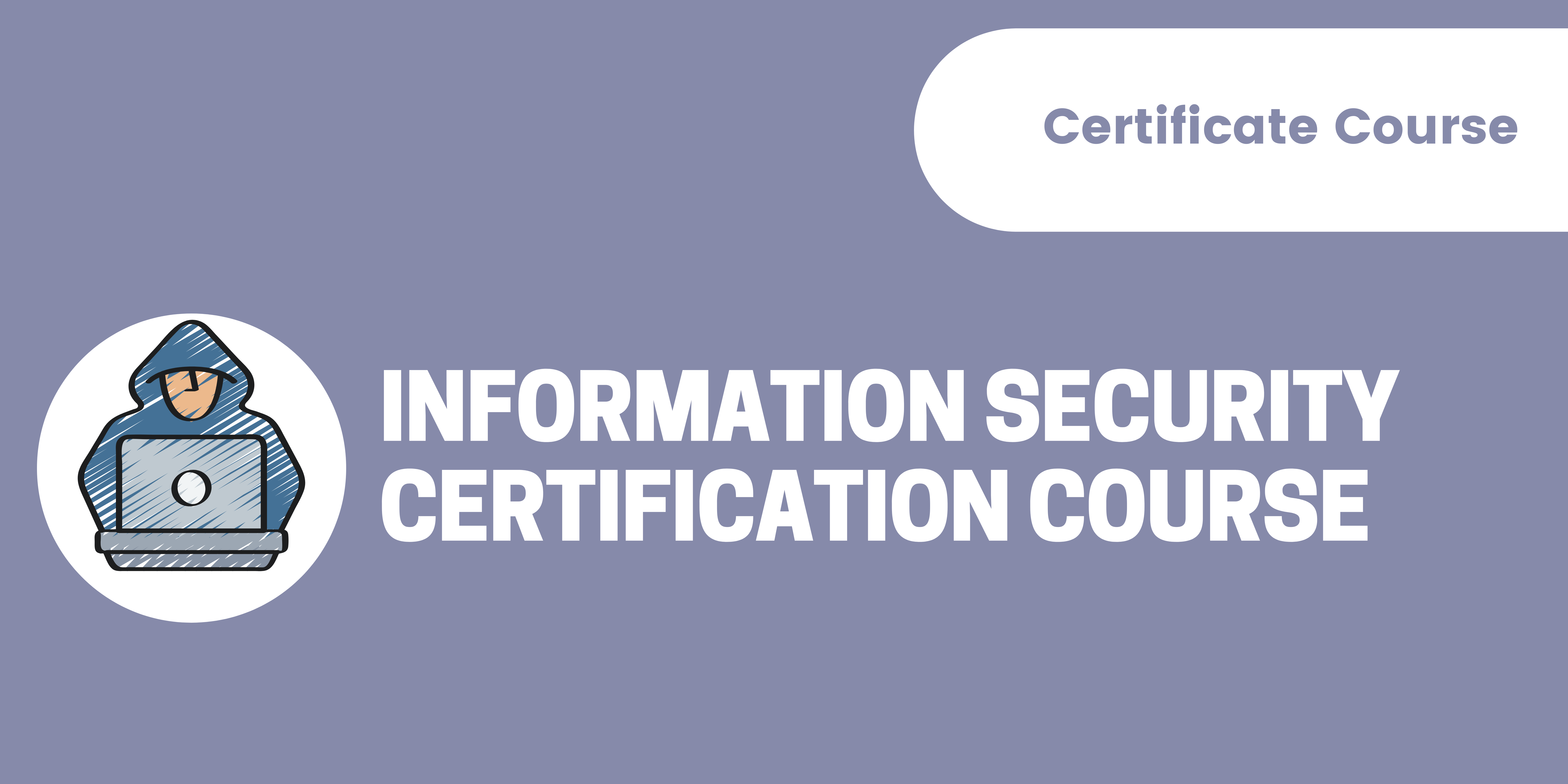



Loading...

Edukero Information Security(Code: 2225)
Outline and Objectives
In this course students learn information security, in both management aspect and technical aspect. Students understand of various types of security incidents and attacks, and learn methods to prevent, detect and react incidents and attacks. Students will also learn application of cryptography which are one of the key technology to implement security functions. This course is 100% practical.
At the last session, teams of students will make presentation of their study project for a topic related to information security.
Goals (Attainment Targets)
(1) To be able to explain various Information security threat and controls for it.
(2) To be able to analyze a security incidents and design countermeasures.
(3) To be able to explain information security incident response.
(4) To be able to explain the usage of Common Key cryptography and Public Key cryptography.
(5) To be able to explain the mechanism to protect confidentiality and completeness of data.
Requirements
Fundamentals of Computer Systems (achievement of attainment targets is required).
Course Schedule
(Notice) This course is a live Face-To-Face session, All session will be recorded and uploaded to the student dashboard, you will work on projects, Assignment, Group Projects, and at the end of the training you will earn a professional certification.
| Lesson 1: Overview of Information Security |
The overview of this course will be explained. Students understand the goal and scope of this course through several examples of security incidents.
1. Orientation (learning objectives, performance evaluation, etc.)
2. What is Information Security?
3. Examples of Information Security Incidents
4. What is Information Security Management
| Lesson 2: Basics of Information Security and Human aspect |
Students learn the three concepts of information security and other basic concepts. Human and
Management Aspects of Security measure is explained.
1. The three concepts of Information Security (Confidentiality, Integrity, Availability)
2. Basic terminologies in Information Security
3. Human Aspect of Information Security
4. Social Engineering
| Lesson 3: Information Security for Server System |
Security Attacks for Server systems will be explained and discuss counter measure for attacks.
1. Attacks to Server Systems connected to the Internet and counter measures
2. Attacks to Web Servers and counter measure
3. Denial of Service Attack
4. Attacks to Network Systems
| Lesson 4: Information Security for Client devices |
Security Attacks for Client devices will be explained and discuss counter measure for attacks.
1. Attacks for Personal Computers and Smart phones, and counter measure
2. How the malicious software intrude the device
3. What the malicious software does to the system
4. Stolen and Lost Devices
| Lesson 5: Information Security Risk Management |
Students learns Risk Management process for Information Systems.
1. What is Risk Management process
2. Identifying Information Assets
3. Identifying Security Risk and evaluation
4. Risk Treatment
| Lesson 6: Information Security Risk Management Exercise |
Students exercises Risk Management process.
1. Identifying Information Assets
2. Identifying Security Risk and evaluation
3. Risk Treatment
4. Presentation of exercise result
| Lesson 7: Security Risk management as an Organization |
Students learn how an organization manage security risk, including, establishing policy, building
organization and internal rules.
1. Information Security Governance
2. Information Security Management System (ISMS)
3. Information Security Policy, Standards and Procedures
4. Information Security Evaluation
| Lesson 8: Security Incident Respons |
Students learn organization to handle security incidents and how to react to security incidents through exercise.
1. What is Security Incident response
2. Computer Security Incident response team
3. Incident response exercise
| Lesson 9: Information Security and Cryptography |
Cryptography is essential technology to protect Information Security. In this section, Students learns about basic concept of cryptography.
1. Requirements for Secure Communication
2. What is Cryptography?
3. Classic Cryptography
4. Modern Cryptography
| Lesson 10: Common Key Cryptography |
Students learn and exercise Common Key Cryptography.
1. Common Key Cryptography algorithms: DES, Triple DES, AES
2. Encryption modes
3. Exercise on Common Key Cryptography
| Lesson 11: Public Key Cryptography |
Students learn about Public Key Cryptography.
1. Problems of Key distribution for Common Key Cryptography
2. What is Public Key Cryptography?
3. RSA
4. Hybrid encryption
5. Recommended Ciphers
| Lesson 12: Public Key Cryptography Exercise |
Students exercise Public Key Cryptography and Hybrid encryption.
1. Exercise of Public Key Cryptography
2. Exercise of Hybrid encryption
| Lesson 13: Data Integrity and Digital Signature |
Students learns how to detect unauthorized change of data.
1. Integrity of Data
2. Hash Function
3. Digital Signature
4. Exercise of Hash functions and Digital Signature
| Lesson 14: Public Key Certificate and PKI |
Students learns about User Public Key Certificate and Public Key Infrastructure (PKI).
1. Key Certificate: Digital Signature of Public Key
2. Public key Infrastructure (PKI) and Certificate Authority
3. Exercise on PKI
| Project 15: Student Project |
| Lesson 16: Presentation and Discussion |
Groups of Students will make presentations for the topic they selected and researched. After each
presentation, we have Q&A and Discussion session in the class.
| Reference Books |
Title: Principles of Information Security
Author: Michael E. Whitman and Herbert J. Mattord
Publisher: Cengage Learning;
ISBN: 1285448367
To understand cryptography in depth
Title: Understanding Cryptography: A Textbook for Students and Practitioners
Author: Christof Paa and Jan Pelzl
Publisher: Springer
ISBN: 3642041000
| Career Guide & Resume Preparation |
Live Face-To-Face Session with the faculty
100% Practical Session
Resume Preparation
Professional Global Recognize Certificate